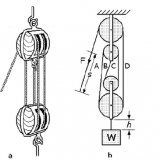LADAR – 21079
Ladar is an acronym that stands for laser detection and ranging. It is also known as laser radar or lidar (short for light detection and ranging).
In robotics, a ladar system uses a shaft of visible light or infrared (IR) energy, rather than radio waves (as in radar) or acoustic waves (as in sonar) to perform range sensing and plotting of the environment. The device works by measuring the time it takes for a laser beam to travel to a target point, reflect from it, and then propagate back to the point of transmission.
The principal asset of ladar over other ranging methods is the fact that the laser beam is extremely narrow. This provides vastly superior direction resolution compared with radar and sonar schemes, whose beams cannot
be focused with such precision.
Ladar has limitations. It cannot work well through fog, or precipitation, as can radar. Certain types of objects, such as mirrors oriented at a slant, do not return ladar energy and produce no echoes.
A high-level ladar system scans both horizontally and vertically, thereby creating a three-dimensional (3-D) computer map of the environment.This type of system is extremely expensive. Less sophisticated ladar devices work in a single plane, usually horizontal, to create a two-dimensional (2-D) computer map of the environment at a specific level above a floor or flat ground.



